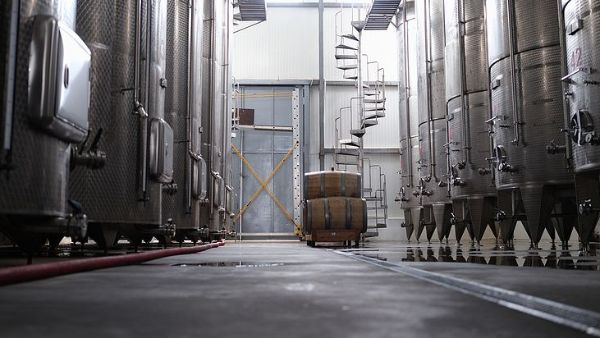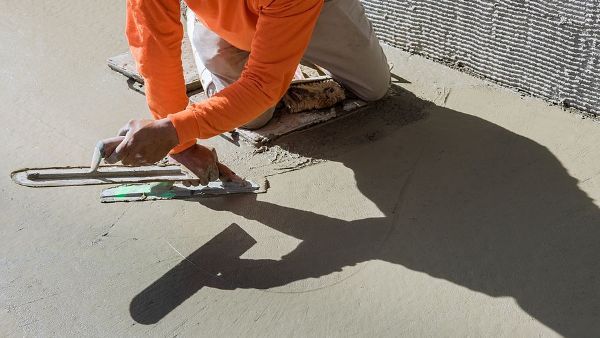From Ancient Civilizations to 3D Printing: A Short History of Concrete
From Ancient Civilizations to 3D Printing: A Short History of Concrete
Concrete is one of the oldest building materials in the world. It can last for centuries, so it’s no wonder humans have used it in everything from Roman temples to Mayan buildings to modern skyscrapers. Entire books have been written about the history of concrete; here’s a slimmed-down overview.
First, a definition: Concrete is a material made by combining crushed stone, sand, or other types of particulate materials with a fluid binder and giving the mixture time to harden. Throughout history, humans have used many different ingredients when making concrete; more below on how the recipes have changed over time.
Some of the oldest known concrete structures are in modern-day Syria and Jordan; they were built by members of the Nabataean Kingdom beginning around 6500 B.C. They made their concrete with hydraulic lime and used it for underground cisterns to store drinking water. During the same time period, people living in southeastern and central Europe built houses with concrete floors.
There’s a vigorous debate about whether the ancient Egyptians used concrete when building the pyramids. Some historians claim that the Egyptians made concrete from crushed limestone, clay, and other ingredients which they used to create some of the giant blocks used in the pyramids. Other historians say that proponents of this theory have rocks in their heads and the older idea that all the blocks were cut from solid stone is the correct one.
About the same time in ancient China, people used sticky rice to develop a type of mortar that’s unusually long-lasting and water-resistant. They used this mortar to hold together building materials such as stone and wood, including in some of the oldest portions of the Great Wall. There’s some debate about when the Chinese started using a building material that definitely counts as concrete, but one suggestion is during the Han Dynasty, which lasted from 206 B.C. to 220 A.D.
People in ancient Greece and ancient Assyria sometimes used concrete from about 1400 B.C. onward, but the ancient Romans were the ones to take concrete to the next level. They used volcanic ash, quicklime, and pumice as ingredients, and from about 300 B.C. to 476 A.D. they constructed numerous buildings, aqueducts, and other structures that used concrete. Two of the most famous examples are the Colosseum and the Pantheon; even today the Pantheon’s unreinforced concrete dome is the largest in the world. Roman structures built with concrete still exist throughout Europe; they have lasted so long in part because concrete made from Roman recipes is resistant to fracturing and saltwater damage.
The history of Mayan construction is not nearly as well documented as that of Rome, but we know that the Mayans used concrete when building the city of Uxmal sometime between 500 and 1000 A.D. Uxmal contains many highly decorated buildings that have survived in the tropical Central American climate for more than 1000 years.
For well over 1000 years after the collapse of the Roman Empire in 476 A.D., concrete was used far less often in European construction, and much of the concrete produced was of lower quality than the Roman versions. In the 1750s, however, an English civil engineer named John Smeaton used hydraulic lime to make concrete for possibly the first time since the Roman era. He used this concrete to build a 72-foot-tall lighthouse on the southern English coast. The lighthouse was in use for more than a century; it was decommissioned in 1882 not because of any problem with the building itself but because the rocks underneath it were eroding.
The next big news in concrete was the development of Portland cement in the 1820s, also in England. This version is still used today. In France, Joseph Monier drew on earlier advancements to develop reinforced concrete in 1849. From then on the use of concrete only expanded. Some notable concrete “firsts” include:
- The first reinforced concrete home (1854, England)
- The first reinforced concrete bridge (1875, France)
- The first concrete street (1891, United States)
- The first concrete high-rise building (1904, United States)
- The first delivery of ready-mix concrete (1913, United States)
Other advancements include a well-received 1902 apartment building in Paris, a 328-foot bridge built in Rome in 1911, and the 1915 construction of the 5-story Fiat-Lingotti Autoworks building, complete with a rooftop test track. The American architect Frank Lloyd Wright also helped to popularize concrete, starting with his 1908 Unity Temple.
Throughout the twentieth century concrete only got more popular. The construction of the Hoover Dam used more than 4 million cubic yards of concrete, and the Sydney Opera House, completed in 1973, has concrete ribs. Other advancements included colored, pre-stressed, thin-shelled, and decorative concrete. Today concrete is the most-used building material in the world; in 2021 a Dutch company even built a 3D-printed concrete home!
RTS Construction is not your ordinary concrete contactor. Our specialists are concrete experts who are eager to help you achieve your goals.
Contact us today to get started with your dream project.





